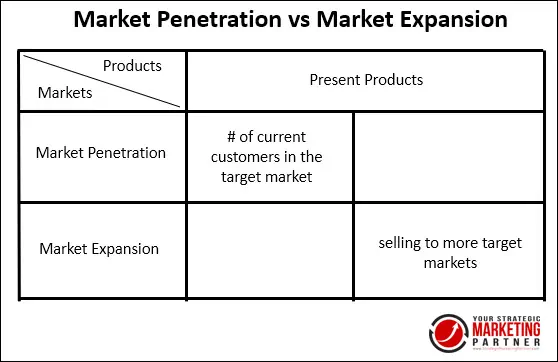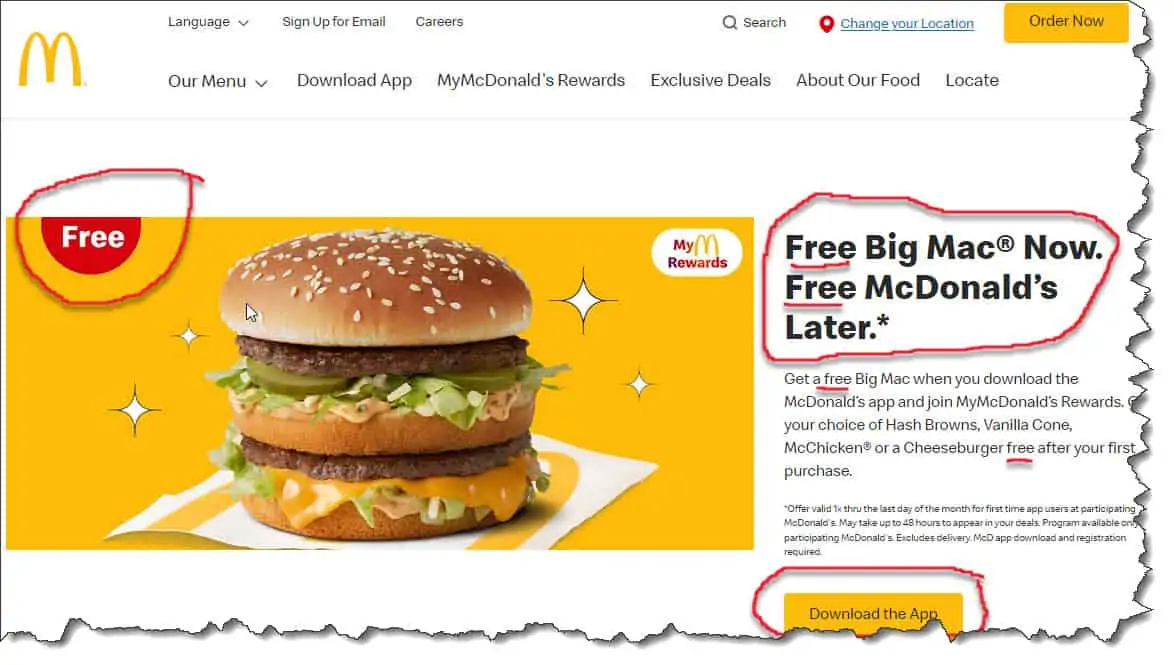International Marketing vs. International Business (the difference)
Better technology, increased communication and free trade have made international business and international marketing much easier in recent years. In […]
Read More »Become a successful marketing consultant: Learn more

If you have ever wondered what the difference is between market penetration and market expansion, you have come to the right place!
That’s because in this article we will review the exact difference and provide some examples so you can easily integrate this into your marketing plan.
Plus, you’ll know exactly why market penetration is important for all companies to sell more products and services, and why penetration is different from market expansion, which is a crucial method for business growth in marketing.
What Is The Difference Between Market Penetration And Market Expansion?
Market penetration and market expansion are similar, but very different growth strategies. Market penetration refers to the number of current customers within a target market. On the contrary, market expansion refers to selling to an additional target market(s).
Let’s now go deeper into these strategies, give you everything you need to know and provide some examples so you can use these strategies in your growth marketing plan.
As we get started, know your marketing plan should use both market penetration and market expansion strategies at all times. That is, you should be devoting resources to gaining more share of the existing market, and simultaneously, be searching for new markets at all times -- regularly combining a market penetration strategy with a market expansion strategy.
Ok, here's the difference between the two strategies with an example.
Let’s say you work for an auto shop who does regular auto maintenance (oil change, brakes, tires, etc) and you have 10,000 potential customers in your target market as defined as:
A market penetration strategy is gaining as many customers as possible within this given target market. For example, your target market is defined as 10,000 home owners and you have 1,000 of these as paying customers in your database. You have a 10% market share.
But now let’s say that your market penetration strategy goal is to gain a larger percentage of this target market. After 12 months of executing this into your local marketing plan, you find that you have 2,000 customers in your database so you now have a 20% market share as a result of your market penetration strategy.
On the other hand, a market expansion strategy (often called market development) is the process of expanding the target market, thereby increasing the total number of potential customers.
There are a couple ways to do this, and for this article we will keep it very simple and just focus on paying customers. You can also expand the market (which will also affect the penetration strategy) by increasing the number of transactions per customer, but we will address that topic at a later time.
For this example, let’s stick to the basics of marketing:
Onward.
Since you have 10,000 potential customers in your target market, and you own a 20% market share. It’s now time to make the target market bigger with a market expansion strategy.
You can expand your target market by finding new markets.
For example, let’s say you did your research and you found another target market:
This means that your expanded target market is now 20,000 and considerably opens up your ability to gain more customers and generate more sales revenue.
Is this a form of a marketing growth hack? Absolutely if it leads to using your resources better to gain faster growth. So how do you use this information for marketing growth, to gain sales revenue and increase customers?
As we dig deeper into this, here are the two main ways this works:
Let’s now use this and develop your marketing penetration strategy.
Market penetration is the process of gaining more share in an existing market.
Let’s now develop your market penetration strategy, with some examples.
Market penetration is when a company introduces its product (or a new product) into an existing market, with the intent to objectively gain a larger portion of market share.
A market penetration strategy focuses on penetrating a specific target market segment and building a strong customer base.
A market penetration strategy aims to gain market share by increasing the demand for a company's product or service. This strategy is implemented by introducing new products and services, creating awareness about the company's products, and improving customer service.
Going back to the auto shop, one way to increase market penetration is to add another store location within the primary target market. This would increase awareness of the auto shop brand and it would acquire more customers, making it easier for them if this new location was even closer.
Another option to increase market penetration is to offer more services to the existing customer base. The auto shop could offer a new suite of EV services to increase the number of transactions each customer makes with the shop, thereby increasing the number of customer transactions within this target market. This example ties in closely with the market expansion strategy, as the auto shop could easily locate the number of electric vehicles within a 10 mile radius and provide an advertising campaign around this target market as well, further expanding the market, and thereby presenting new opportunities for market penetration.
Another example, suppose you are selling a new product that only works with other products, like specialty coffee beans that go well with certain coffeemakers and not others. In this case, you could use the market penetration strategy to sell your coffee beans at specialty stores where people buy specialty items.
You would first establish yourself as an expert by educating people on what goes well with this coffeemaker and then sell them your specialty coffee beans at higher prices than regular grocery stores would sell them.
Market penetration is generally easier than market expansion because you don't have to change anything about your product or service. Although the time will come when you need to focus on updating your product development strategy (another topic).
With market penetration, you need to focus on ensuring your product is what your target market wants, before expanding markets.
The market penetration strategy aims to maximize sales volume in the existing market.
Market expansion is the process of identifying and capturing new markets for your products, thereby increasing the total number of potential customers.
A market expansion strategy is a plan to expand the sales and revenue of a company's product or service in new markets. Such a strategy aims to increase the company's revenue, profits, and market share by selling in new locations.
Market expansion is when the company expands its sales volume into an entirely new market. Oftentimes, a company will enter an entirely new geographic area to find a new market.
This is the case for franchising. A franchise will expand markets by duplicating their business in multiple markets, such as states and regional territories, even internationally.

When McDonald’s opens a new store in China or France, this is part of their market expansion strategy via international marketing.
Some common market expansion strategies may be:
Companies that have a market expansion strategy are more likely to be successful than companies without one.
This is because companies with a market expansion strategy are also focused on their market penetration strategy in their core market (s) and know that continual product development is also core to long term market penetration.
This means that companies with a market expansion strategy will typically develop new products or services for existing customers in order to maintain and grow their market penetration strategy, which further helps them gain customers in other markets.
This is how the two strategies of marketing penetration and market expansion work together so well.
Yet another reason why companies that have a solid market expansion strategy differ from market penetration strategies is because they do not have an unhealthy focus on the competition.
Instead, they focus on increasing the size of your market by expanding into new areas and targeting new customers -- constantly innovating and constantly marketing!